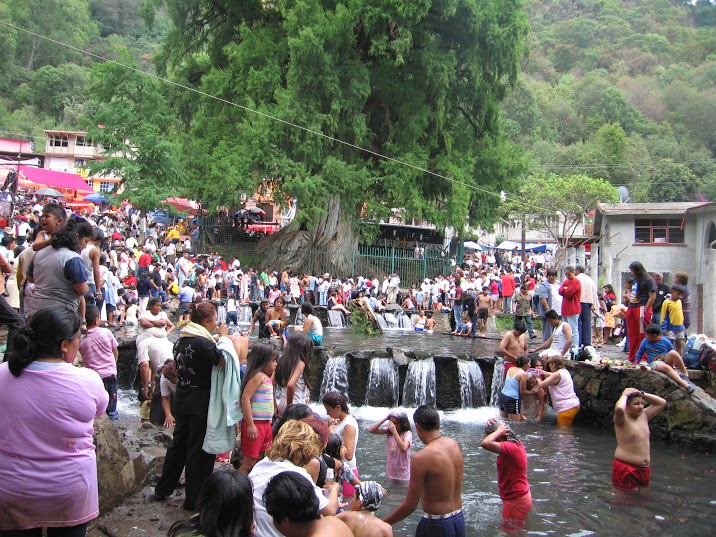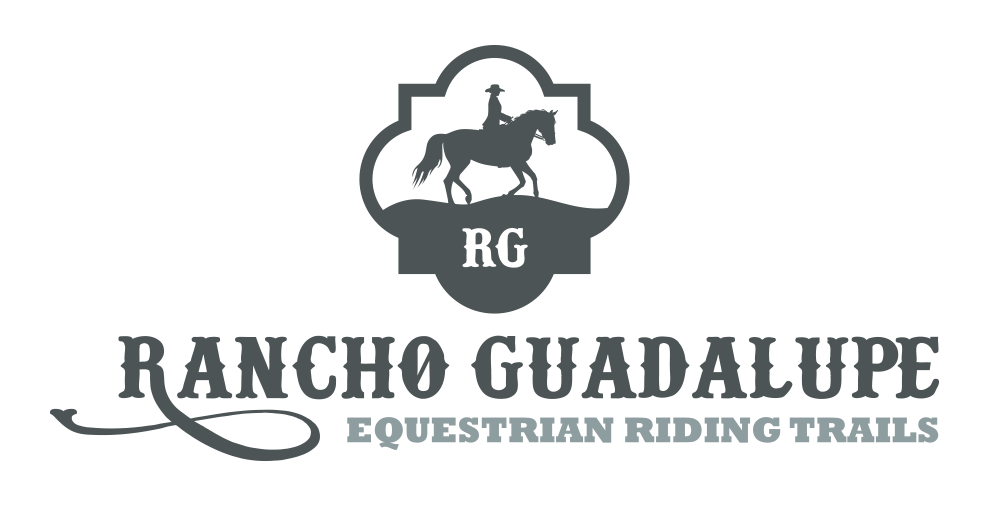
- June 08, 2016
- Guadalupe Ranch Horseback Riding Vacations in Mexico
Riding Tours: The Sanctuary of Chalma
Chalma, about an hour and a half by car from Cuernavaca, is a rather grubby little town, which few foreigners visit. Yet on weekends and holy days, the place is packed with pilgrims, who come to worship the Dark Lord on the cross. Drawn by its magical spirit, they come by bus, car, bicycle and by foot, as their ancestors have for more than 600 years. (Note: Also on a Horse!)
Chalma is the now the second most visited pilgrimage site in Mexico and just as the adherents to Our Lady of Guadalupe are called Guadalupanas, the devotees of the cult of Our Lord of Chalma proudly call themselves Chalmeros. The tradition of the pilgrimage passes from generation to generation.
When the Augustinian friars came through this area in the mid 1530's, they learned that the local Indians made pilgrimages to a place which sounded like Chalma. The pilgrims walked for days, wearing flowers in their hair and carrying incense burners of copal and other offerings to Ozteotl: the Dark Lord of the Cave. They bathed in the river fed by a sacred spring and drank holy water before entering the cave.
Eventually, when the friars were taken to the cave to see the stone idol, they found flowers and other gifts, as well as blood - evidence of sacrifice. In 1539, Fray Nicholás de Perea gave a sermon to the Indians, preaching the evils of idol worship and blood sacrifice. When they returned to the cave three days later, it had been cleaned and whitewashed.
The flowers were still there, but the image of Ozteotl was in pieces on the floor. In its place was a life-size image of a dark Christ on the cross. Seeing this, the Indians reportedly fell down in "a wave of apostolic piety" and thus began the conversion of the natives in this region.
Before long, the cave entrance was enlarged and a shrine was dedicated to St. Michael in honour of his driving out the demons. In time, a monastery was built and in 1683 a new church with the official name of El Convento Real y Sanctuaria de Nuestro Señor Jesus Christo y San Miguel de los Cuevas de Chalma (the Royal Monastery and Sanctuary of Our Lord Jesus Christ and Saint Michael of the Caves of Chalma) under the protection of Charles III of Spain.
Today’s pilgrims follow each other along the same narrow paths they have for centuries. They take a route through Cuernavaca, then cut through back roads and continue cross-country to Chalma. Many walk the last leg of their journey at night, the glittering light from their torches and candles snaking a magic trail up and down the deep ravines. Women carry small babies; old men hope for a miraculous cure; and young folk seek an adventure. They wear flowers, just as their ancestors did and many crawl on their knees for the final part of their journey.
Upon entering the charming baroque church, they light a candle and place a milagro (small metal talisman) in a box before the altar. The greatest number of pilgrims make the journey for Lent to receive the ashes at mass on Ash Wednesday.
The peregrinos (pilgrims) arrive in Chalma in time for a hearty breakfast and early mass then relax a while in small plazas around the church before the journey home. At the back of the church, behind the monastery flows a stream - where people still bathe in water from the same spring which fed Ozteotl's cave. Here there is a wall, overcrowded with simple paintings, photos, locks of hair and other personal tributes displayed as thanks for miracles granted.
Most pilgrimages are well organized. Some parishes have tee shirts and special clothing produced for the annual pilgrimage. However, sometimes you’ll still see groups of pilgrims wearing traditional clothing from their region. Trucks from the village sometimes accompany a group carrying food and camping supplies and assisting the old and tired. The trucks are brightly decorated with banners and intricate flower arrangements and one wonders how the driver ever sees out.
The group of pilgrims on the right is returning home to San Bartolome Cohuécan, a village in Puebla where the people speak Nahuatl.. They walked for 4 days to Chalma and will walk 4 days home. One young man, walking at the head of the crowd, is carrying a crucifix from their village church and others carry banners - announcing their village.
This is essentially a youth group with 81 young people from the parish aged 15 to 30. The elder of the group is Martiñano Aldama Perez (second from left) who has been making the pilgrimage every year since his youth, as did his father and grandfather.
Assisting him as leader is Cecilio Ramos Acatlan (centre) who is proud of the order he keeps with this gaggle of youths and girls, shepherding his young flock using whistles and flags. Groups sometimes have to walk on the shoulders of busy highways and along precipitous ravines. This group doesn't carry food supplies as they eat in villages and town markets along the way.
Hanging on cord around their necks are paintings and statues of the Dark Lord of Chalma wrapped in plastic to protect them When they get home these souvenirs will no doubt hang on a wall in a place of honor.
The girls stick together. Most of the group wear the same home-made leather sandals. Their clothing is modest, and they carry a few essentials in a bedroll, as they sleep in fields and villages overnight. A hand-carved, ten peso (USD$1) walking stick, purchased at Chalma, is de rigeur for the trip home. Many people also take home a plastic bottle of holy water from the spring which once fed into Ozteotl's cave and now comes from a fountain outside the church.
Some pilgrims will make the trip only once in their lives, for others it is an annual event. For centuries, the ancestors of these people have made the journey to this holy place. Even though the old religion of Ozteotl has been replaced by Roman Catholicism, many elements remain the same. The tradition will not die, and Chalma is still a holy place where people pray for miracles.
You can get to Chalma from Mexico City or Cuernavaca via Toluca. There are no first class buses, and you can expect crowds on weekends. Hotels in Chalma are very basic, better accommodation is available in Malinalco, a picturesque small town nestled into the mountainside with a well-preserved Aztec ceremonial site. The town is developing into a small artist community.
Article from Rhonda Tranks, MexConnect
